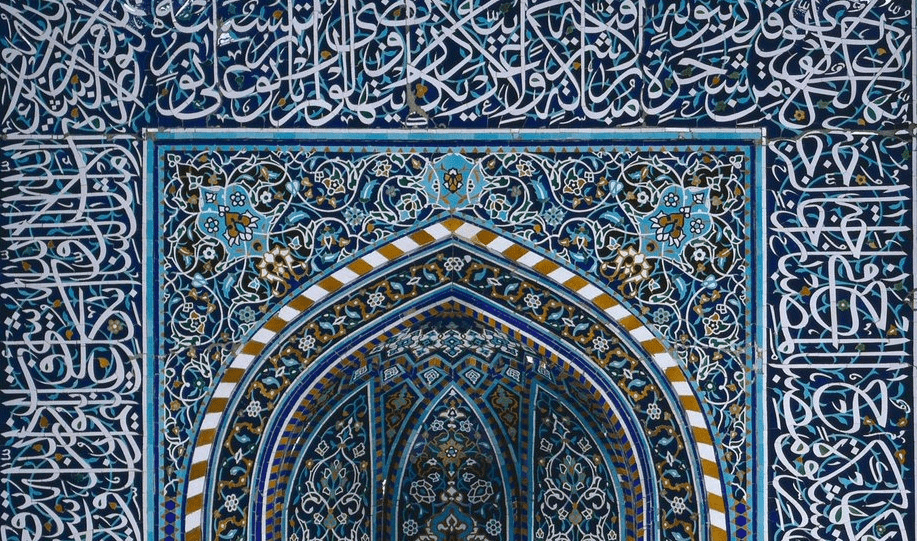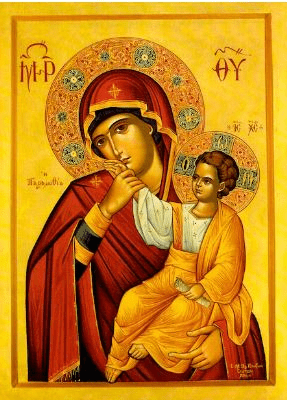Pigment containing ferric oxide, typically with clay, varying from light yellow to brown or red. Can be found in Hall of Bulls, Lascaux, France, c. 15,000-13,000 B.C.E
Ocher
A structure consisting of vertical beams supporting a horizontal beam
Post and lintel
The mihrab (niche inside a qibla wall) has only this kind of designs and imagery on it
aniconic, non representational, no icons, geometric, motifs

The belief in many gods
Polytheistic
The type of pottery of the Niobid Krater
Red-figure
Parthenon, Athens, Greece, architects Iktinos and Kallikrates, marble, Ancient Greek c. 447-432 BCE
The representation of the three-dimensional world on a two-dimensional surface in a manner that creates the illusion that the person, object, or place represented is three-dimensional
Illusionism
The function of Koran page, 800 - 900 CE, Iraq or Syria, ink and gold on parchment (vellum)
Holy text of Islamic religion
This Roman house contains wall frescos painted in 4 different styles.
The House of the Vettii, Pompeii, Italy, c. 200 - 100 BCE, destroyed 79 CE.
This famous building was built by architects Iktinos and Kallikrates while the friezes were designed by Phidias
The Parthenon
Identify an artwork that shows Polytheism or makes reference to Polytheistic beliefs. (Full ID)
Artwork from Ancient Egypt, Ancient Greece, or Ancient Rome.
Palette of King Narmer, Temple of Amun-Re, Book of the Dead of Hunefer, The Parthenon, Niobid Krater, The Pantheon
The function of The Palette of King Narmer, Hierakonpolis, Predynastic Egypt, ca. 3000-2920 BCE, slate
A ceremonial palette (typically used for mixing makeup) that shows the triumphs of King Narmer who united upper and lower Egypt
Translating as "She who bore God" a Byzantine encaustic painting from c. 500 CE shows this woman in blue holding baby Jesus
Theotokos
An example of architecture that has a monotheistic religious function
Kaaba, Great Mosque of Kairouan, Cathedral of Notre Dame, Church of San Vitale, Hagia Sophia, Catacomb of Priscilla, Church of Santa Sabina, Pantheon (converted into a church)
A representation or image of a sacred personage, often considered sacred itself
icon
The Qibla wall in a mosque always faces this holy city
Mecca
An artwork that shows Illusionism or attempts to show illusionism
Hall of Bulls, Theotokos, Parthenon Friezes, House of Vettii, Golden Haggadah,
Identify an an artwork that has spolia (the reuse of building materials or sculptures from earlier structures, often in new architectural contexts)
Forum of Trajan/Column of Trajan (top of column replaced with Saint)
Pantheon (changed from polytheistic to monotheistic function)
Church of Santa Sabina (reuses Roman columns likely originally from a pagan temple or public Roman building)
Hagia Sophia (changed from church to mosque)
What material was Hunefer's Book of the Dead made on?
Papyrus
This red-figure vase depicts the story of the gods Apollo and Artemis exacting revenge for their mother Leto on a human who was prideful
The Niobid Krater, Athens, painted by the Niobid painter, terracotta, ca. 460-450 BCE